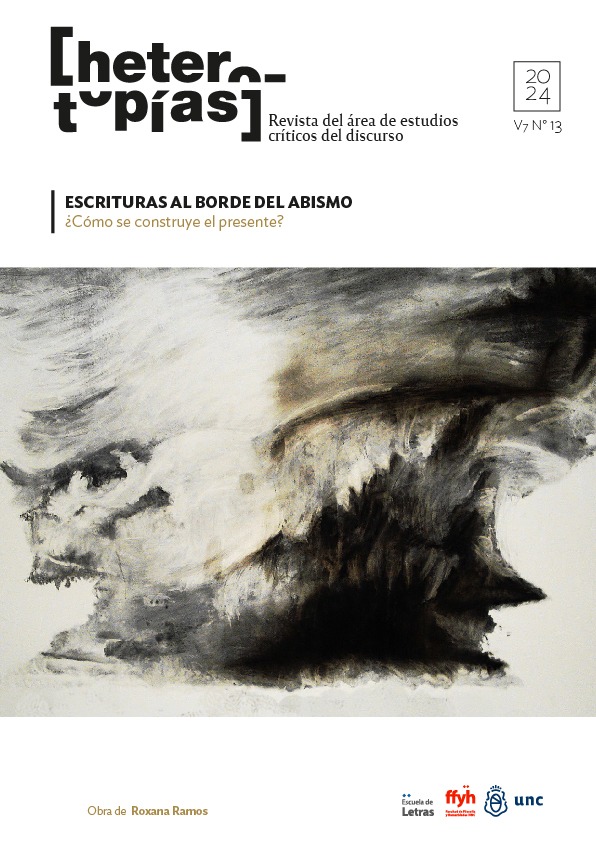The image of architecture as a cultural practice
Main Article Content
Abstract
In our essay, we focus on the problem of the image, rescuing its aesthetic and political character. We wonder about the possibility of making architectural criticism viable by placing the image at the center of the scene and paying special attention to the social level. In this direction we maintain that the image, in addition to an aesthetic category, is an interesting critical device from which it is viable to build/constitute a reader and skillful co-producer of the project. This is where our invitation arises to reflect on the image of architecture or about architecture as an image, from which we also ask ourselves about the role of the reader as co-producer of the project.
Downloads
Article Details

This work is licensed under a Creative Commons Attribution-NonCommercial-ShareAlike 4.0 International License.
Those authors who have publications with this journal, accept the following terms: Those authors who have publications with this journal, accept the following terms:
a. The authors will keep their copyright and guarantee to the journal the right of first publication of their work, which will be simultaneously subject to the Creative Commons Attribution - Non-Commercial - Share Alike (by-nc-sa) Attribution License; no commercial use of the original work or any derivative works is allowed, the distribution of which must be done with a license equal to the one that regulates the original work.
b. Authors may adopt other non-exclusive license agreements for the distribution of the published version of the work (e.g., deposit it in an institutional telematic archive or publish it in a monographic volume) provided that the initial publication in this journal is indicated.
c. Authors are allowed and recommended to disseminate their work through the Internet (e.g. in institutional telematic archives or on their website) before and during the submission process, which may lead to interesting exchanges and increase the number of citations of the published work. (See The effect of open access).
References
Adorno, T. (2011). Teoría estética. Madrid: Akal.
Apóstol, A. (2001-2003). Polished Resident [Imágenes]. https://www.transfer-arch.com/delight/polished-resident/
Arestizábal, I. (2006). Alexander Apóstol. En I. Arestizábal, O. Debroise, T. Escobar, A. Giunta, I. Mesquita, G. Mosquera, A. Pedroza, V. Pérez-Ratton, O. Sánchez y R. Olivares, 100 Artistas Latinoamericanos (pp. 58-61). Salamanca: Imagen y Cultura
Benjamin, W. (2001). El autor como productor. En B. Wallis (ed.), Arte después de la modernidad. Nuevos planteamientos en torno a la representación (pp. 296-310). Madrid: Akal.
Benjamin, W. (2011). Breve historia de la fotografía. Madrid: Casimiro.
Benjamin, W. (2013). La obra de arte en la época de su reproducción mecánica. Madrid: Taurus.
Didi-Huberman, G. (2017). Lo que vemos, lo que nos mira (traducción Horacio Pons). Buenos Aires: Manantial.
Fernández, R. (2011). Mundo diseñado. Para una teoría de un proyecto total. Santa Fe: Universidad del Litoral.
Frittegortto, G. (2008). Clínica Proar/ Rafael Iglesia [Imágenes]. https://tinyurl.com/mr2nrck4
Fundación Bienal de Cuenca. (s.f.). Alexander Apóstol. https://tinyurl.com/ylzooxlf
Guerra Martínez, V. S. (2020). Investigación proyectual y estrategias alegóricas. Conexiones entre el arte reciente y la arquitectura como practica cultural. Córdoba: Universidad Nacional de Córdoba, Facultad de Arquitectura, Urbanismo y Diseño. https://rdu.unc.edu.ar/handle/11086/15944 Iglesia, R. (2017). Rafael Iglesia. ARQ. Buenos Aires: Clarín.
Longhi Traverso, L. (s.f.). Longhi architects. https://www.longhiarchitect.com/
Maderuelo J. (2014). El Collage: una fuerza inconcebible. En S. de Molina, Collage y arquitectura. La forma intrusa en la construcción del proyecto moderno (pp. 9-12). Sevilla: Recolectores Urbanos.
Museo Pachacamac. (s.f.). Bienvenidos al Santuario Arqueológico de Pachacamac. https://pachacamac.cultura.pe/bienvenidos-al-santuario-arqueologico-de-pachacamac
Pallasma, J. (2014). La imagen corpórea. Imaginación e imaginario en la arquitectura. Barcelona: Gili.
Ramírez, E. (2008). Casa Pachacamac/ Longhi Architects [Imagen] https://tinyurl.com/yc3f2ake
Rendueles, C. y Useros A. (2010). Atlas. Benjamin. Constelaciones. Círculo de Bellas Artes. Madrid: Brizolis.
Sarquis, J. (2003). Itinerarios del proyecto. La investigación proyectual como forma de conocimiento en arquitectura. Buenos Aires: Nobuko.
Tatarkiewics, W. (2001) Historias de seis ideas. Arte, belleza, forma, creatividad, mímesis, experiencia estética. Madrid: Tecnos.
